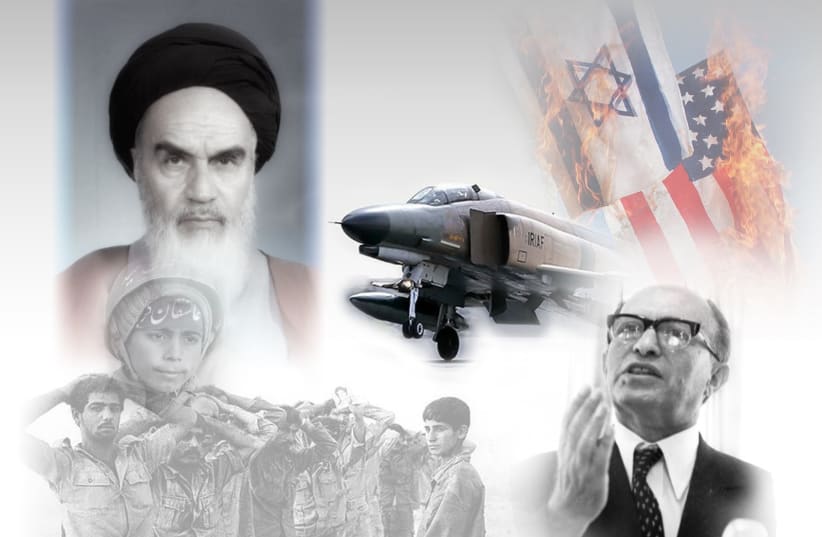Iran’s covert military buildup and operations
Majid Rafizadeh /Al Arabiya
Friday, 6 September 2014
Iran has exercised a tactical shift regarding publicizing its military, ballistic and nuclear capabilities. In the past, its leaders and state media did not hesitate to project its military power more publicly, but they have become less strident in doing so.
Does this mean that Iran has become less inclined to pursue its regional hegemonic ambitions? Recent developments suggest otherwise. Although it denies involvement in other countries’ affairs – including Yemen, Bahrain and Iraq – its covert operations in several states, including Iraq and Syria, have been on the rise. Tehran’s most crucial instrument for covert operations is the Quds Force and Etela’at (the Intelligence Ministry). The increasing power of the Quds Force, an elite branch of Iran’s Revolutionary Guards Corps, has been clear in several parts of the Middle East. Tehran’s political and military relationships – with some powerful non-state players, including Hamas – have also progressed. In addition, Iran has become increasingly engaged in Syria, alongside Hezbollah.
“Although it denies involvement in other countries’ affairs, its covert operations in several states have been on the rise”
Majid Rafizadeh
In terms of strategic influence, Tehran would previously frequently threaten to block or cause serious damage to oil shipments through the Strait of Hormuz. These threats have been absent under the presidency of Hassan Rowhani, but according to a classified Pentagon assessment and Bloomberg News, Iran “continues a low-profile buildup of weapons in and near the Strait of Hormuz.”
Crucial for the global economy
The strait is crucial for the global economy, since approximately 20 percent of the world’s oil and nearly 35 percent of seaborne traded oil pass through it. The classified report points out: “Iran continues to develop its anti-access and area denial (A2AD) capabilities to control the Strait of Hormuz and its approaches. Tehran is quietly fielding increasingly lethal symmetric and asymmetric weapon systems, including more advanced naval mines, small but capable submarines, coastal defense cruise missile batteries, attack craft, and anti-ship ballistic missiles.”In addition, Iran – which possesses a covert long-range ballistic missile development program – is expected to launch an intercontinental ballistic missile by 2015. This has become a growing concern in the region and the West.
Tehran refuses to discuss its ballistic missile program and capabilities in nuclear negotiations with the P5+1 (China, France, Russia, Britain and the United States plus Germany), describing the issue as a “red line.”
Iran appears to be ratcheting up its nuclear technological capabilities, even after an interim deal was reached. According to the classified report, “Iran continues to develop technological capabilities that could be applicable to nuclear weapons and long-range missiles, which could be adapted to deliver nuclear weapons, should Iran’s leadership decide to do so.”
Fundamental objectives
Iran has learned from its past mistakes. Publicizing its military and nuclear capabilities triggered stringent economic sanctions and isolated it regional and globally, endangering the government’s hold on power. Although there are disagreements between Rowhani and the IRGC senior cadre, the country’s underlying tactical shift follows his modern agenda: speaking softly while still pursuing Iran’s hegemonic ambitions. Tehran has attempted to alleviate the concerns of other countries. “Our neighbors should know that if we become powerful in defense industries, it is not merely for our own security, but it is for the security of the entire region,” said Rowhani. “We do not seek an arms race, but we ourselves will make the necessary decisions for defending ourselves and we do not seek the permission of others in this regard.”
The government’s fundamental objectives behind keeping a low profile are most likely to:
1. Ensure the power and rule of Supreme Leader Ayatollah Ali Khamenei.
2. Exert more direct or indirect power by secretly strengthening alliances with Shiite states and non-state actors.
3. Project Iran as the sole regional power.
4. Pursue regional hegemonic ambitions.
5. Remove economic sanctions.
6. Wield direct power regionally and internationally via nuclear and atomic capacities.



















